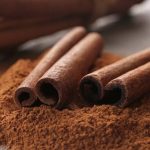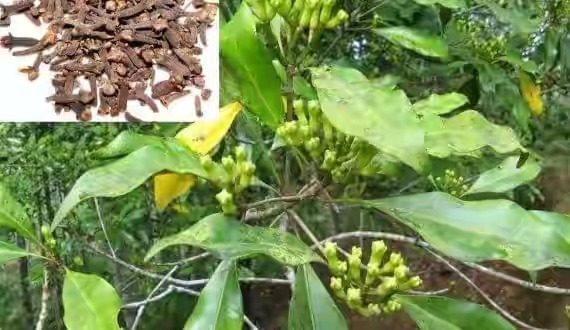Cinnamomum zeylanicum or Cinnamomum cassium or Cinnamon (English) or Kirfa (Hausa) or Oloorun (Yoruba) or Cynamon (Polish): An important spice with many health benefits.
Cinnamon is a spice that has been used for centuries both for its enhancement of taste and for its potential medicinal benefits. It is prepared from the dried inner bark of evergreen trees grown in South Asia (Ceylon cinnamon, Cinnamomum zeylanicum) and Southeast Asia (Chinese cinnamon or cassia, Cinnamomum cassium). Cinnamon is mentioned in the histories of ancient Rome and Egypt as well as medieval Europe. Its historical uses were quite varied and included applications for flavoring, food preservation, and medicines and even as an embalming agent.
Currently, cinnamon has primary uses in foods and fragrances. In foods, it is noted for conveying a sense of sweetness and warmth and is found as a flavoring agent in diverse products such as baked goods, beverages, meat dishes, cereals, and fruit preparations. Oil from the bark is also used in the manufacture of perfumes, cosmetics, shampoos, and toilet soaps. A few studies carried out in humans have been published that investigated the efficacy or effectiveness of cinnamon on physiological parameters and health-related conditions. The treatment of diabetes, especially type 2 diabetes mellitus has been investigated in several clinical trials and is probably the most well-documented health benefit of this spice for humans.
However, additional research is needed to determine whether it can help control this disease in free-living individuals. Additionally, some data suggest that cinnamon may be effective in the adjuvant or supportive treatment of cancer, infectious diseases, and other disorders related to modern lifestyle because of to its anti-inflammatory, antimicrobial, antioxidant, and blood pressure-lowering effects. It is worth mentioning that spices, including cinnamon have been traditionally used since ancient times for their antiseptic and disinfectant properties. Cinnamon, among others, has potent antimicrobial activity against very dangerous bacteria, such as Bacillus subtilis and Escherichia coli.

Credit: CNN
The essential oils of several Cinnamon species have been shown to act against Candida albicans and Candida glabrata, which are fungi that cause urinary tract infections, especially in females. Spices, including cinnamon as well as vegetables possess antioxidant activity that can reduce the damage by free radicals to lipids/fats in our body.
As a reminder, free radicals have been implicated in a range of human diseases such as atherosclerosis (hardening of blood vessels) and certain cancers. Free radicals can play a key role in inflammatory and immune processes. Some scientists including Dragland and his colleagues found very high concentrations of antioxidants (i.e., >75 mmol/100 g) in the medicinal herb Cinnamomi cortex in 2003. Anti-tumor and anti-cancer properties of a given food or substance are closely related to its antioxidant and immunomodulatory properties. Studies on the antioxidant and immunomodulatory properties of cinnamon may imply antitumor activities.
Cinnamon bark affects the blood and cardiovascular system. The cardiovascular properties of cinnamon are closely connected to its effects on blood lipids and glucose metabolism. Many compounds or substances (nutrients, nutraceuticals, and drugs) that enhance insulin sensitivity (increase in the body’s response to insulin) and/or reduce circulating insulin concentrations also lower blood pressure. Most of the scientific studies conducted on the benefits of cinnamon have shown that the higher the amount we consume the better for us.
Dose-response trials are of paramount importance, as the clinical studies on the hypoglycemic properties (blood-sugar lowering effects) of cinnamon have shown. The studies which did not yield statistically significant results were carried out with a daily dose of ≤1.5 g of cinnamon. Significant positive effects were only found in studies, in which 3 to 6 g of cinnamon were used daily. It is important to know that one (1) teaspoonful of cinnamon powder weighs approximately 1.5 g. It seems reasonable that up to 2 teaspoons of this spice could easily be integrated into a normal diet.
The side-effects of Cinnamon
Because many of my readers have asked about the dangers of the use of cinnamon by kids, I have decided to give some details of possible side effects of this spice. It appears to be safe for most people when taken by mouth in amounts up to 6 grams daily for 6 weeks or less. Some people may have allergic reactions to cinnamon or its parts. Cassia cinnamon contains coumarin, the parent compound of warfarin, a medication used to keep blood from clotting.
Due to concerns about the possible effects of coumarin, in 2006, the German Federal Institute for Risk Assessment warned against consuming large amounts of cassia cinnamon. It should not be used in place of conventional medical care or to delay seeking care if you are experiencing symptoms that are of concern; this is particularly true if you have diabetes.
Tell all your health care providers about any complementary and alternative approaches you use. Give them a full picture of what you do to manage your health. This will help ensure coordinated and safe care.
These are the thoughts of:
Sa’eed Halilu Bawa
Senior Lecturer (Associate Professor) at University of the West Indies, St. Augustine Campus, Trinidad.
Studied Food and Nutrition Sciences, Dietetics at Kaduna Polytechnic, Nigeria; Warsaw University of Life Sciences, Poland.
























